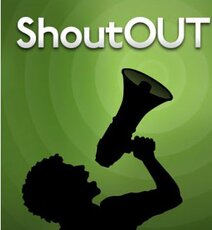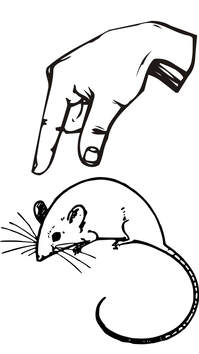Week 9 - Timing Is Everything  Imagine, if you will, that you are a British author, but for reasons we won’t go into, you are living in Australia. Your books are aimed at a British audience mainly. Australians may read them as well (you hope they do), but when you were sitting writing your book, you had visions of busy London streets, leafy Surrey lanes or majestic Scottish glens. Q. You want to use social media to tell your British readers about your new book. When is the best time for you to post on social media? A. When your audience is awake and using social media, of course. Ah, but you are in Australia, which means that when your audience is awake, you are asleep and vice versa. That is going to present a problem. But that is an extreme example. There are, however, many different times when different people are online and knowing when your audience is online is critical to your social media marketing campaign.  Nurses, who work shifts, don’t get much time for social media while they’re at work, so they use social media when they finish their shift, which could be midnight, 6 a.m. or the middle of the day. But if your target audience includes nurses, you will want to be posting to social media at the time they are using it. Think about it – when do toy manufacturers advertise their toys? When they know children will be watching TV. Yes, we know that it’s the adults who buy the toys, but it’s the kids who pester the life out of the parents to buy them.
sporting events, of course – but also when people are getting back from the pub after having one drink too many and not wanting to go to bed just yet (ah, the good old days). The timing of your messages has to be just as targeted. It’s no good knowing who your target audience is and what they are interested in, if you are in bed when they are on social media. There is a myriad of information on the internet that can help you to identify the best times of day to use different social media platforms and even what days are best and which are worst (Saturday isn’t a good day for Twitter, apparently).  You’ll have to do some digging (Well, you didn’t think we were going to do it all for you, did you?) OK, we’ll help a bit. This website shows what times to post in generic terms, but doesn’t give you much insight into such things as age, employment, gender etc. There are plenty of blogs on the subject on that website, dig around a bit and you should find what you are looking for. Here’s a couple of facts for you. A post on Facebook is most read during the first 1½ hours after posting. After that the number of people who will see it starts to dwindle towards zero. 75% of the people who will see it, will view it in the first 5 hours after posting.
minutes. Yes, 24 minutes after you post your Tweet, fewer and fewer people will see it. On Twitter, 75% coverage is achieved after 3 hours. That’s why timing is so important.  These statistics are vital for engagement. If you want to stay engaged, you have to be there when people see and respond to your post, especially on Twitter. If you go back the next day, or even later the same day, the world has moved on already. That’s why you have to be careful of claims such as “We have a gazillion followers to whom you can Tweet”. Very few of that gazillion will ever actually see your Tweet. A portion (of unknown size) of that gazillion followers will actually see it and out of that portion, 75% of them will see it in the first 3 hours after posting. That could mean that only ten people from your target audience will actually see it. The rest of the gazillion just aren't interested or will never see the post. "to keep your marketing message “fresh” on social media, you have to keep posting at regular intervals" If your head is starting to hurt, we don’t blame you. Ours is hurting too. What that all means, however, is that to keep your marketing message “fresh” on social media, you have to keep posting at regular intervals. But that means that you have to interrupt your work, sleep, leisure time, etc to keep on posting.  Fortunately help is at hand. There are websites that will allow you to set up and schedule posts in advance. When the clock ticks over to the appointed time, your post will magically appear on your chosen platform while you continue to snore your head off, or play golf or complete the monthly report on the snail population of the Galapagos Islands, or whatever it is you are usually doing at that time. Unfortunately, most of these websites charge for their services. This one, Hootsuite, does offer you a 30 day free trial so you can see if it is right for you and they also offer a free package with limited functionality. But the big advantage of sites like this is that you can sit down for a couple of hours once a week to schedule all your posts to that one platform in one go, then get on with the rest of your week without having to worry about them. If you have Facebook business page, which is different from a personal page, you can schedule posts for free. Look under the "publishing tools" menu for more information. You can also schedule Tweets. It's one of the little row of icons underneath where you insert your message (the one on the right with the calendar symbol and the little clock). Hootsuite and the other sceduling apps are quite picky about you sending out identical messages time after time, but that’s because of the rules governing spam. We like to post in the afternoon and again in the evening, so when we duplicate a post, we schedule it for the evening of the next day, rather than for the same day. That seems to get past the problem, but you may have to edit the message if it is specific to a single day - or limit it to one posting.  This blog is posted at midnight every Friday night, but do you imagine we spend our Friday nights with our fingers hovering over the mouse, waiting to click on it? We do not. Our website has the facility to schedule our blog posts. When this went live, I was probably deep in the arms of Morpheus or, at least, draining the dregs from a bottle of wine. So, our big messages this week are:
We have talked a lot about “engagement” with your audience, but we haven’t talked much about what actual messages to send them, so that’s where we will start next week. We hope you have enjoyed this blog and found it informative. Please feel free to take a look around the rest of the site to see what we have to offer. And if you want to make sure you don't miss a future edition of the blog, click the button to sign up to our newsletter.
0 Comments
Leave a Reply. |
AuthorThis blog is compiled and curated by the Selfishgenie publishing team. Archives
March 2025
|

 RSS Feed
RSS Feed